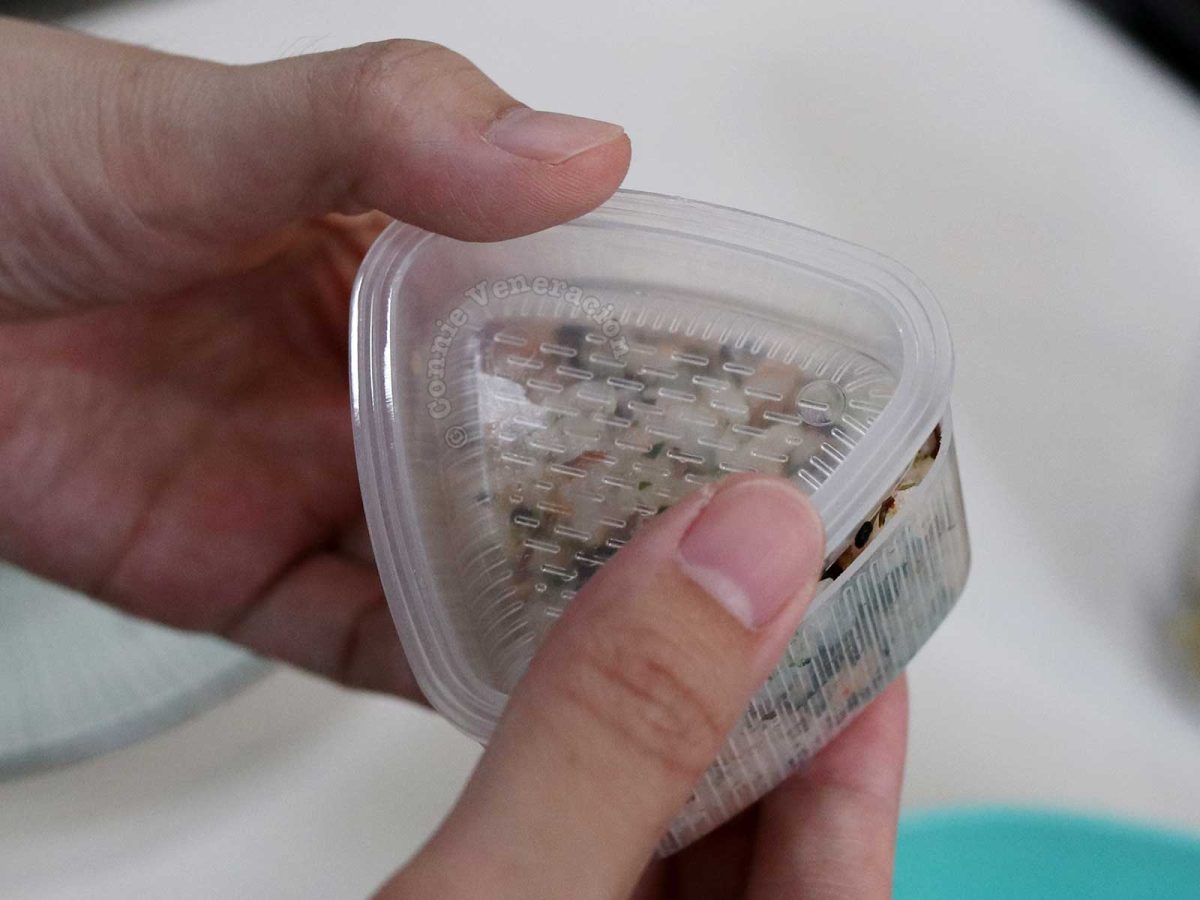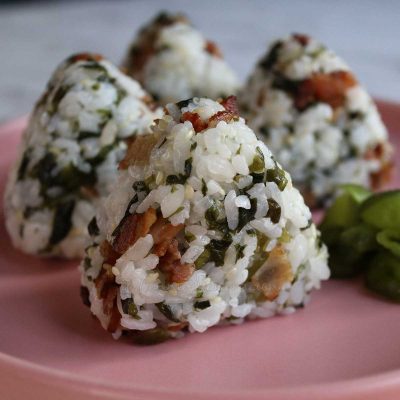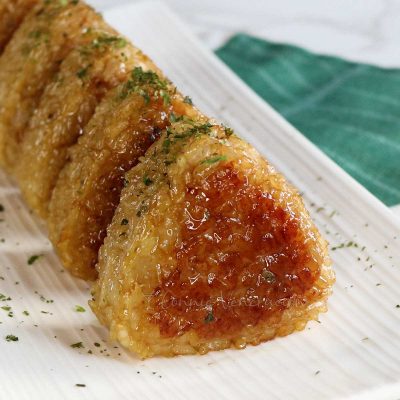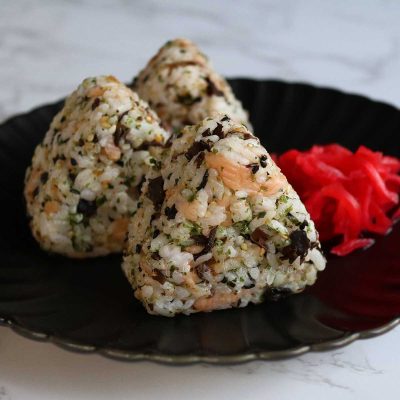Onigiri molds (or molder) come in a variety of colors, designs and sizes. Some are smooth; others are ribbed. Some designs consists of two equally-sized triangular receptacles attached together on the side.
The onigiri molder we use at home consists of two unattached ribbed triangular receptables. The deeper (bottom) part is where we put the rice. The shallower (top) part is what we use to press the rice to make it compact.
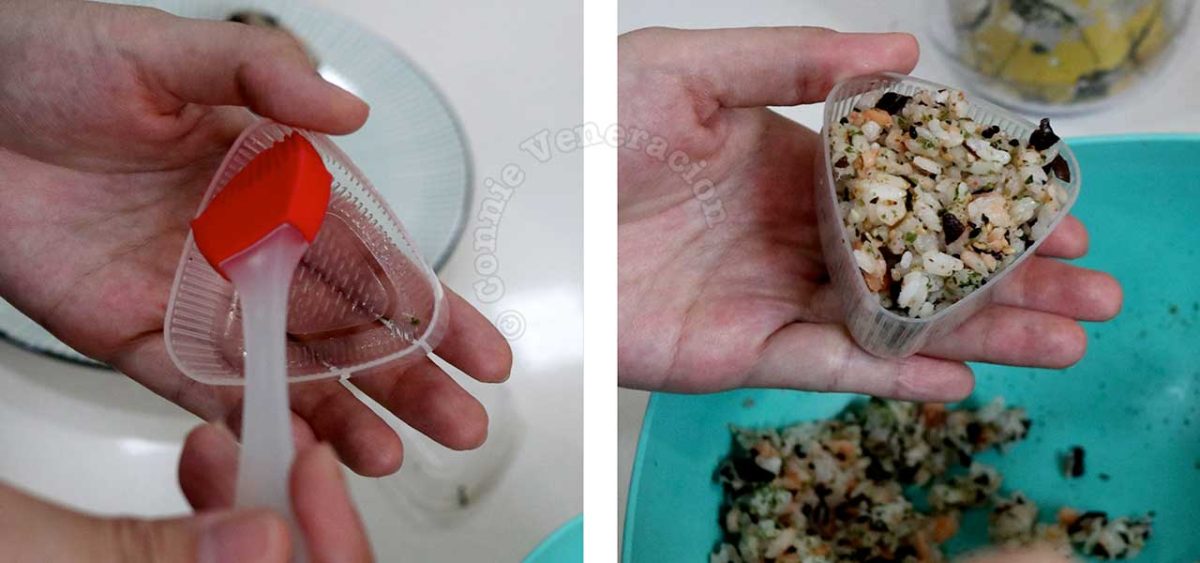
Before you start making onigiri, we brush the inside of the bottom part with water. That makes it easier to release the molded rice without risk of leaving some grains sticking to the molder.
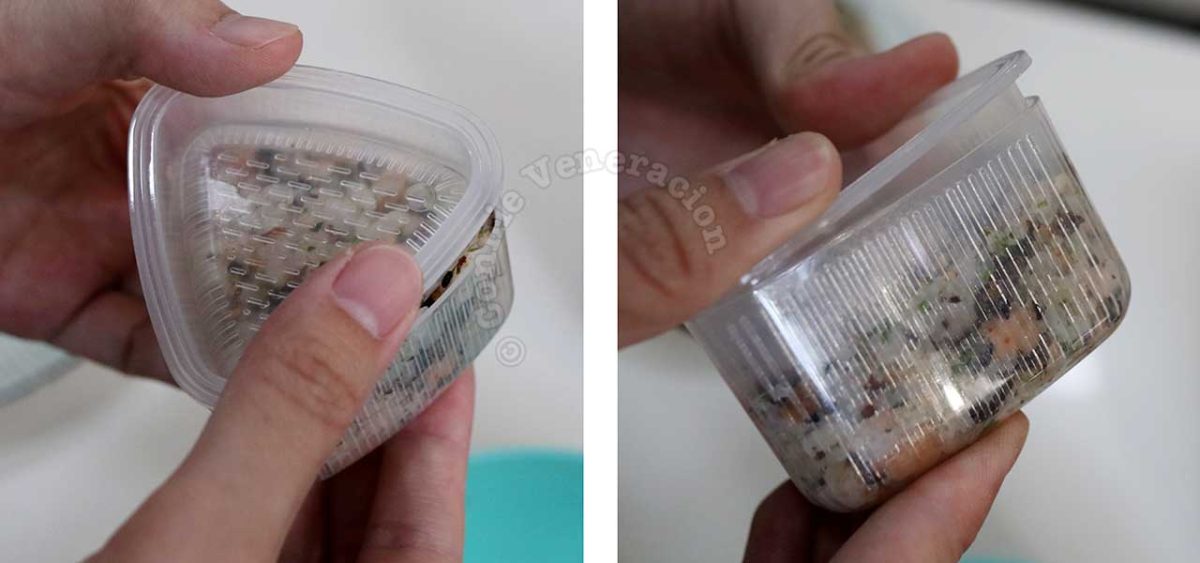
Then, we stuff it with rice. We fill it to the brim. The flat bottom of the top part of the molder is then pressed into the rice to remove air pockets and make the grains stick to one another better. The top part is removed, the part with the rice is inverted on a plate and the bottom is pressed to release the rice.
Sounds easy, right? It is. We should have bought onigiri molders a long time ago. Instead, we were so gung ho on shaping the rice with our hands and the results have been inconsistent. Sometimes, we manage to come up with onigiri that are of the same size and weight.
Other times, we mess up. But it’s hard to mess up when you have an onigiri mold. So, if you’re an onigiri lover, get a mold. Get two or more in different sizes, in fact. Onigiri molders are cheap, they are easy to wash and store, and they will yield a lot of onigiri before they need to be replaced.

